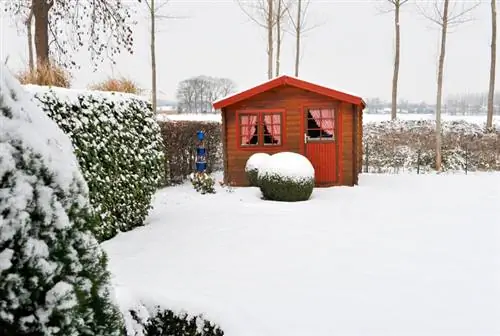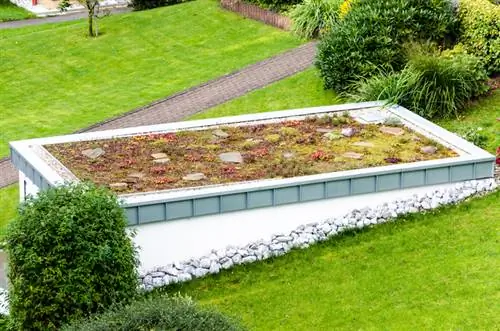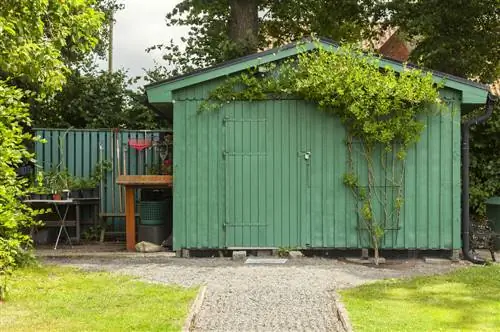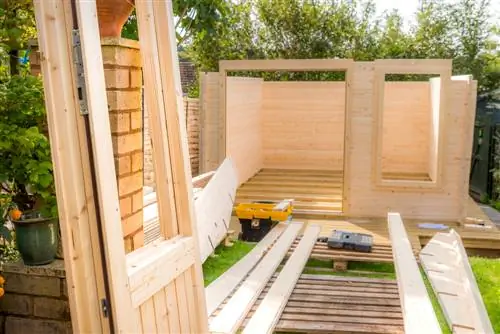- Author admin [email protected].
- Public 2023-12-16 16:46.
- Last modified 2025-01-23 11:21.
A well-insulated garden house not only ensures greater well-being, garden tools and stored items are also protected from the weather. An additionally insulated floor keeps frost away from the surface. At the same time, the interior of the house does not heat up excessively on hot days. Insulation that you can easily do yourself is a sensible investment for almost every garden shed.

How can you effectively insulate a garden shed?
In order to optimally insulate a garden house, walls should be insulated with Styrofoam or Styrodur, interior walls with fireproof insulation materials, the floor with insulation foil and materials and the roof with insulation mats or bitumen shingles. Windows and doors must be sealed with silicone or sealing tape.
Optimal insulation of the walls
The following applies here: the thicker the insulating layer, the better the effect. Solid materials with a thickness of between half and five centimeters are suitable for cladding external walls. The following are almost always used here:
- Styrofoam
- Styrodur
which are attached to the walls using wooden formwork. It is important that the layer is well sealed so that no moisture can penetrate the wood. You can seal any remaining grooves and joints with silicone.
The interior walls are additionally insulated with materials such as wood wool, hemp fibers or mineral wool. When purchasing, make sure that the insulation materials used are fireproof, only then are they suitable for use with wood.
Floor and roof insulation
Cold always comes from below, which is why this insulation measure is particularly important for a pleasant climate.
Let's start with the floor:
- First cover the floor area with profiled wooden boards. These should definitely be treated with wood protection paint in advance.
- Insulation foil, insulation filling made of Styrofoam or Styrodur and another layer of foil.
- Floor boards are then placed over the insulating layer.
The second step is the roof:
Depending on the construction method, insulation mats or loose insulation materials that are injected through a hole drilled in the ceiling are well suited for this. Covering the roof with bitumen shingles, which are available in numerous beautiful colors, or laying roofing felt also has an insulating effect and makes the house weatherproof at the same time.
Don’t forget windows and doors
The best insulation is useless if there are drafts through gaps in doors and windows. Not only does heat escape here, moisture can also penetrate; The result would be a musty room climate instead of the desired homely atmosphere.
Silicone, which is simply injected, is very suitable for closing joints. Window and door frames can also be sealed with a sealing tape, similar to those used in households. More luxurious, but especially in a garden house that you also want to use in the cold season, is double glazing for the windows.
Tip
When insulating the garden house, make sure that no cold bridges are created. Moisture could condense here, leading to mold formation.






